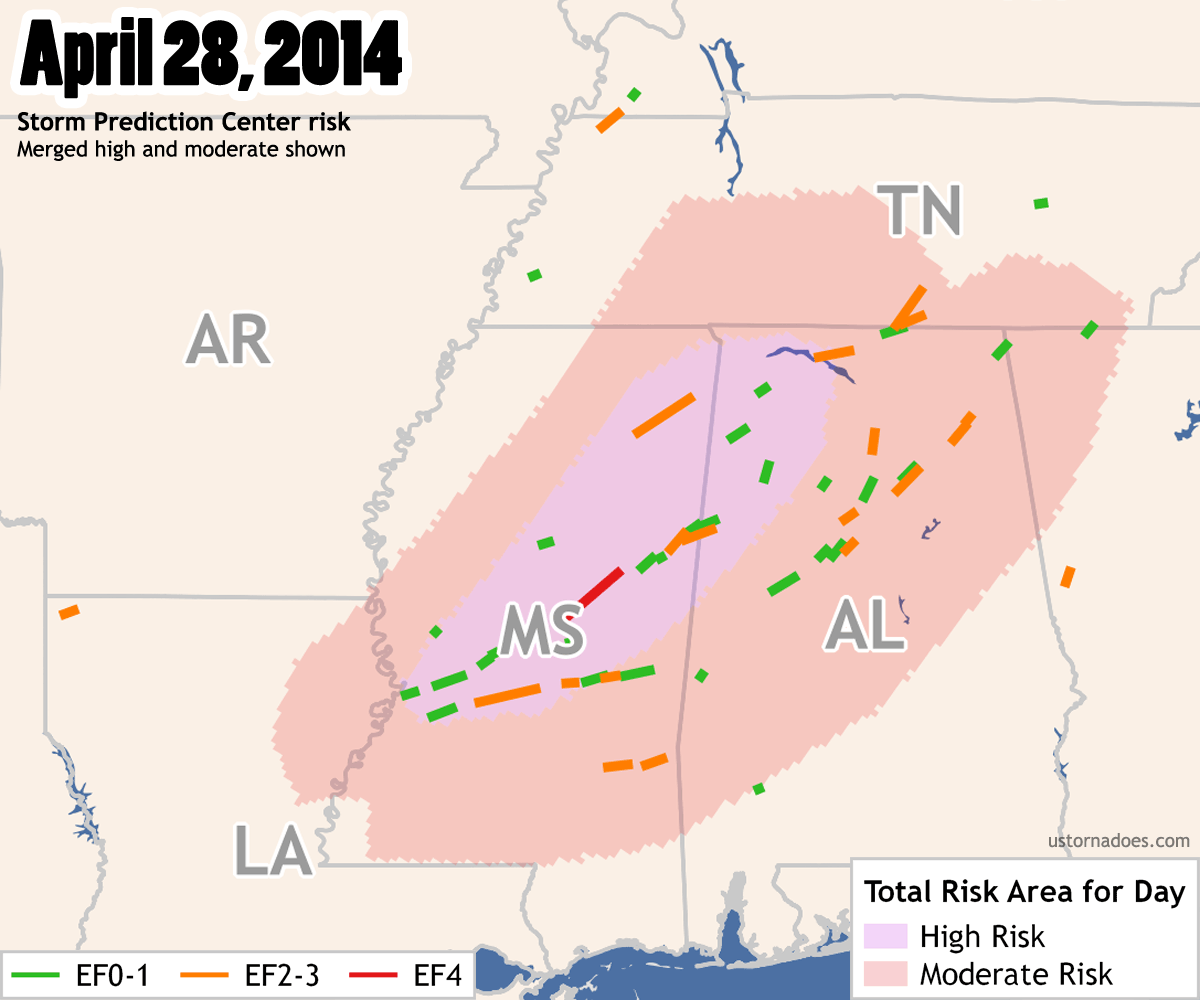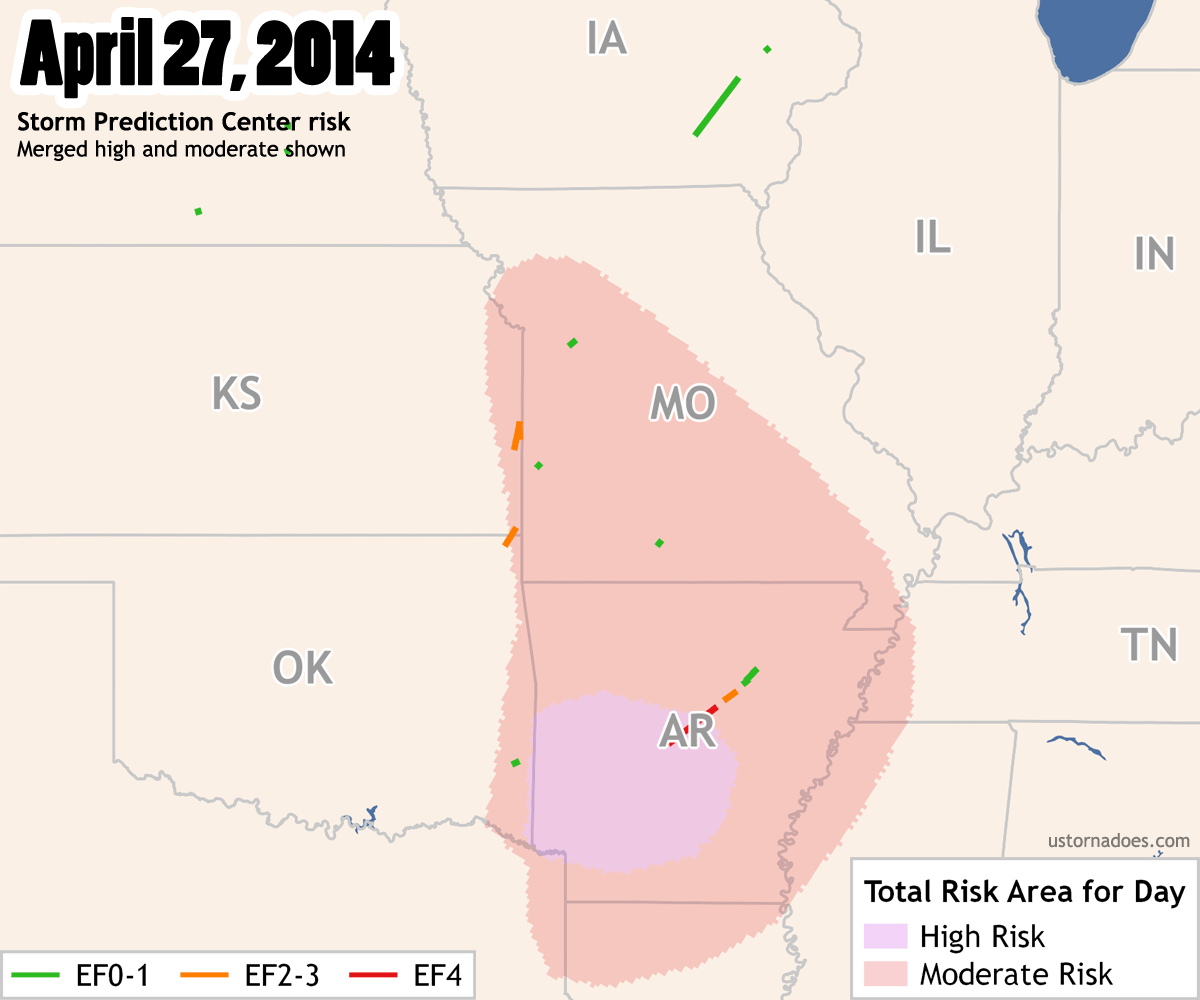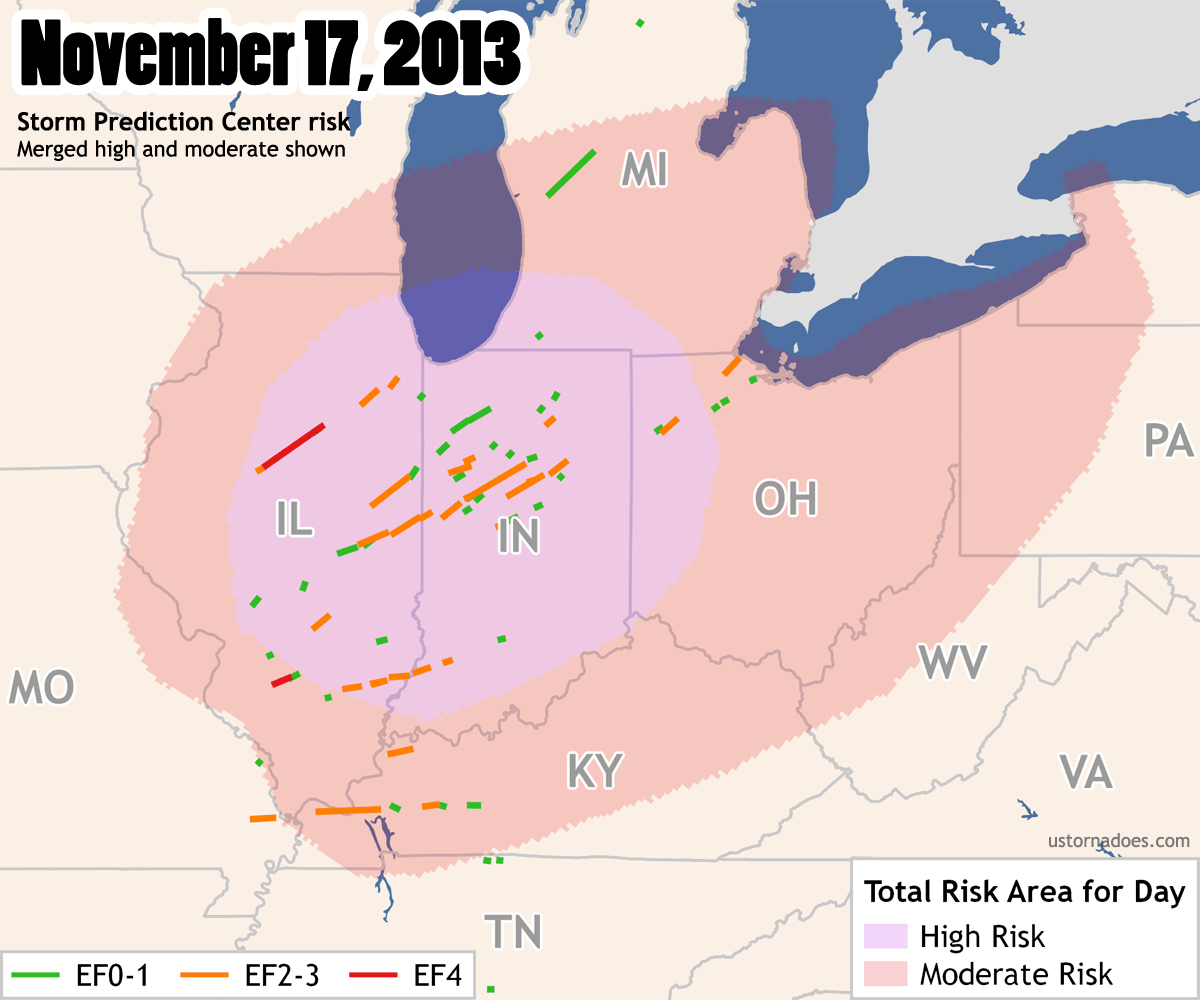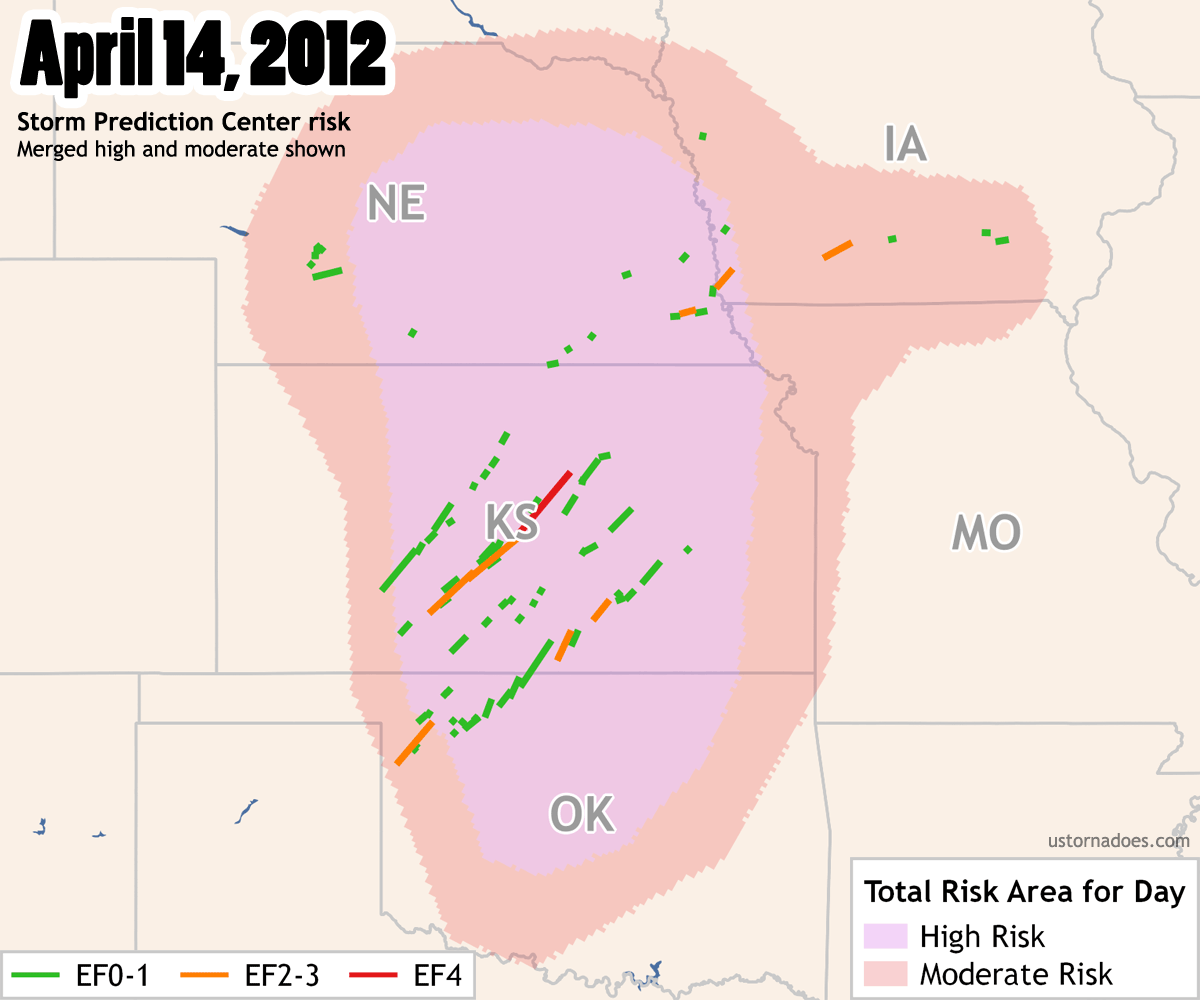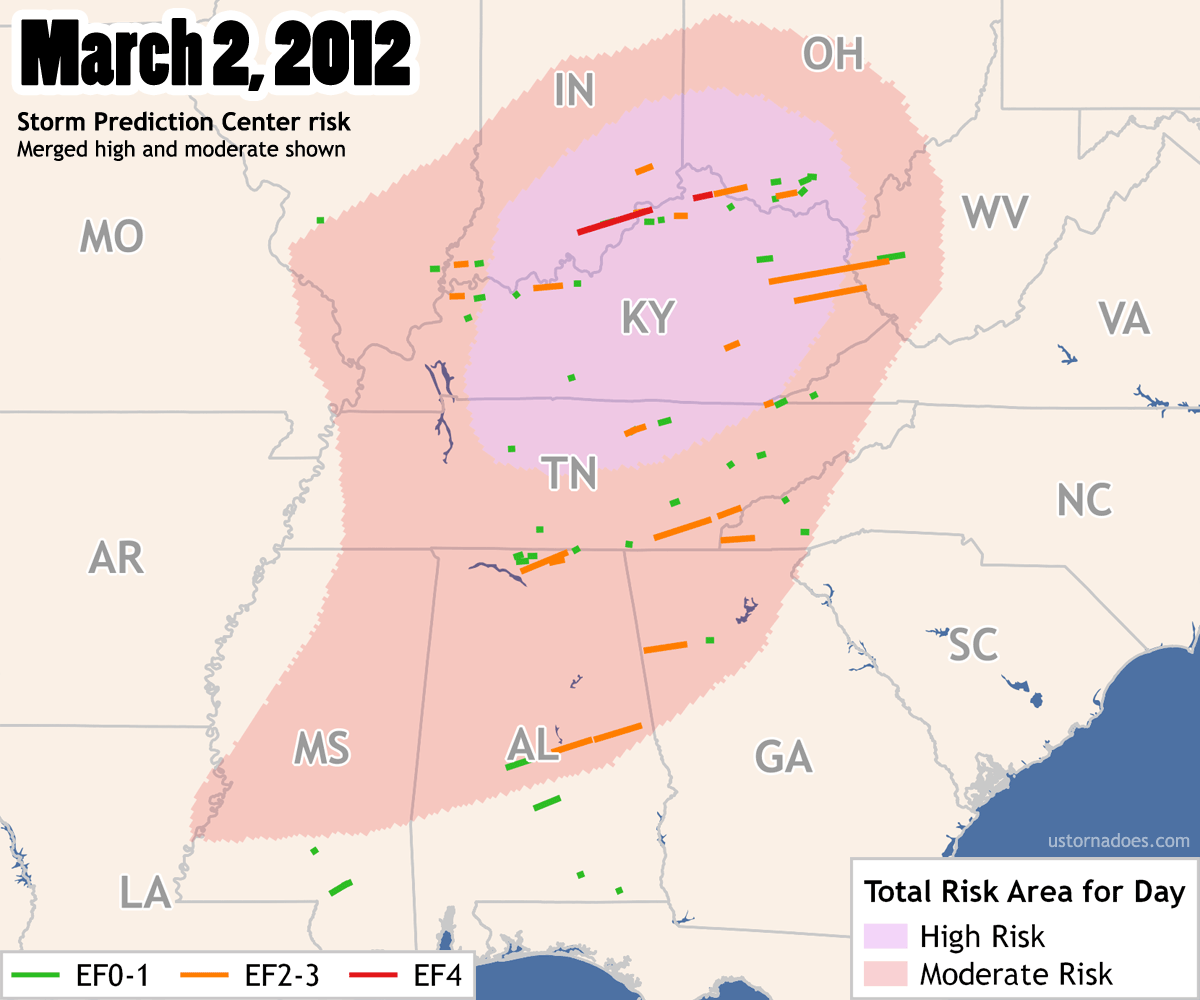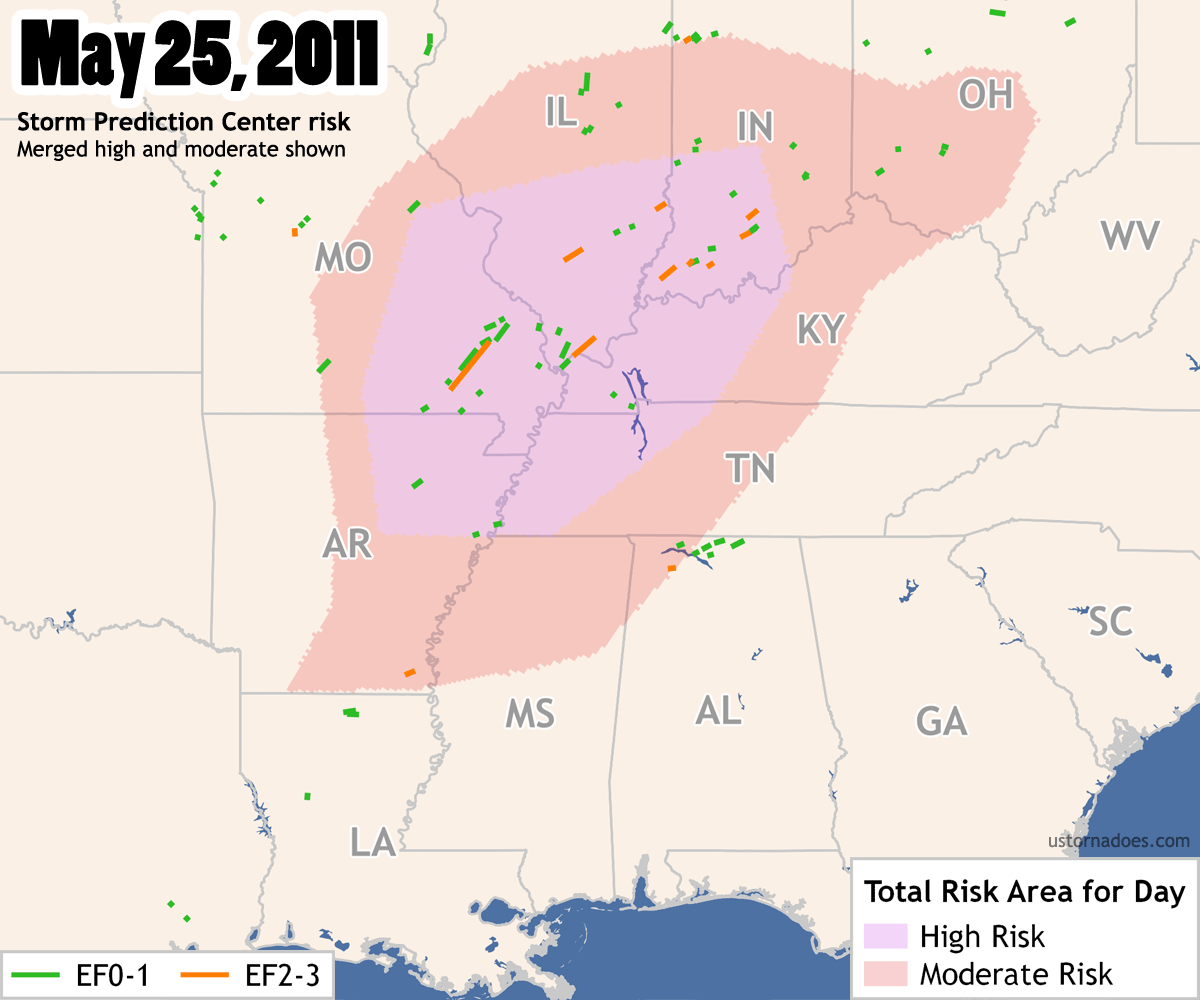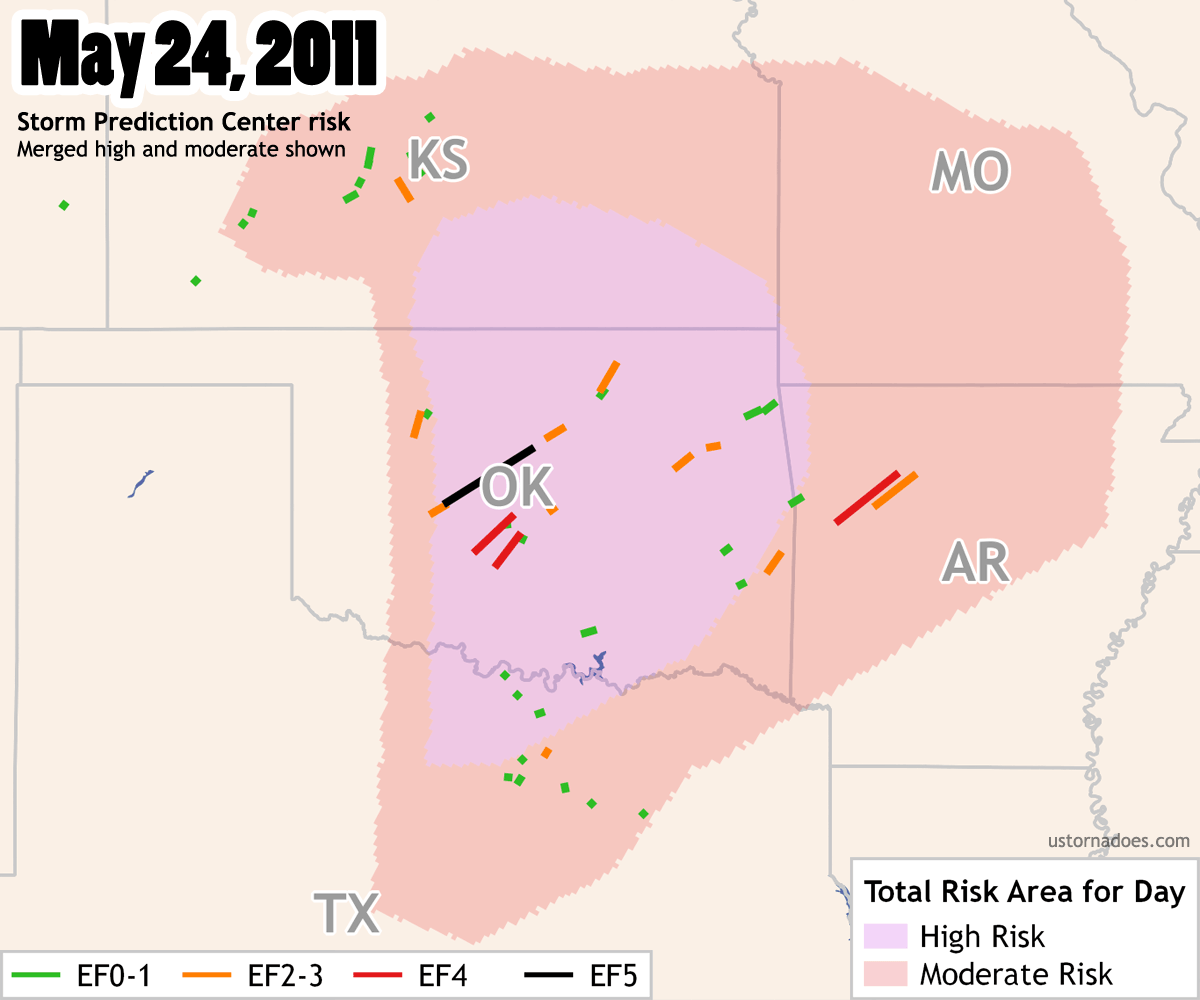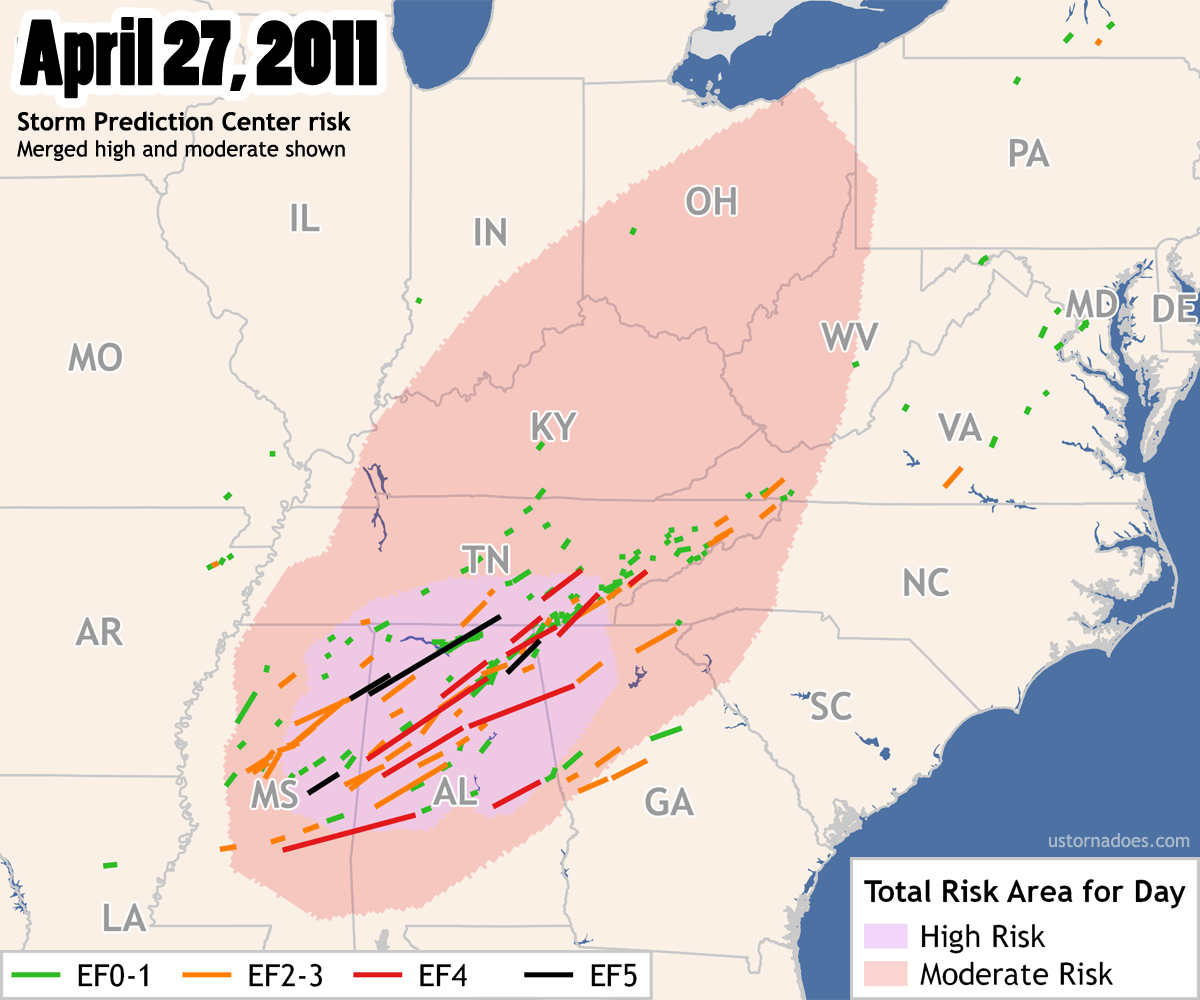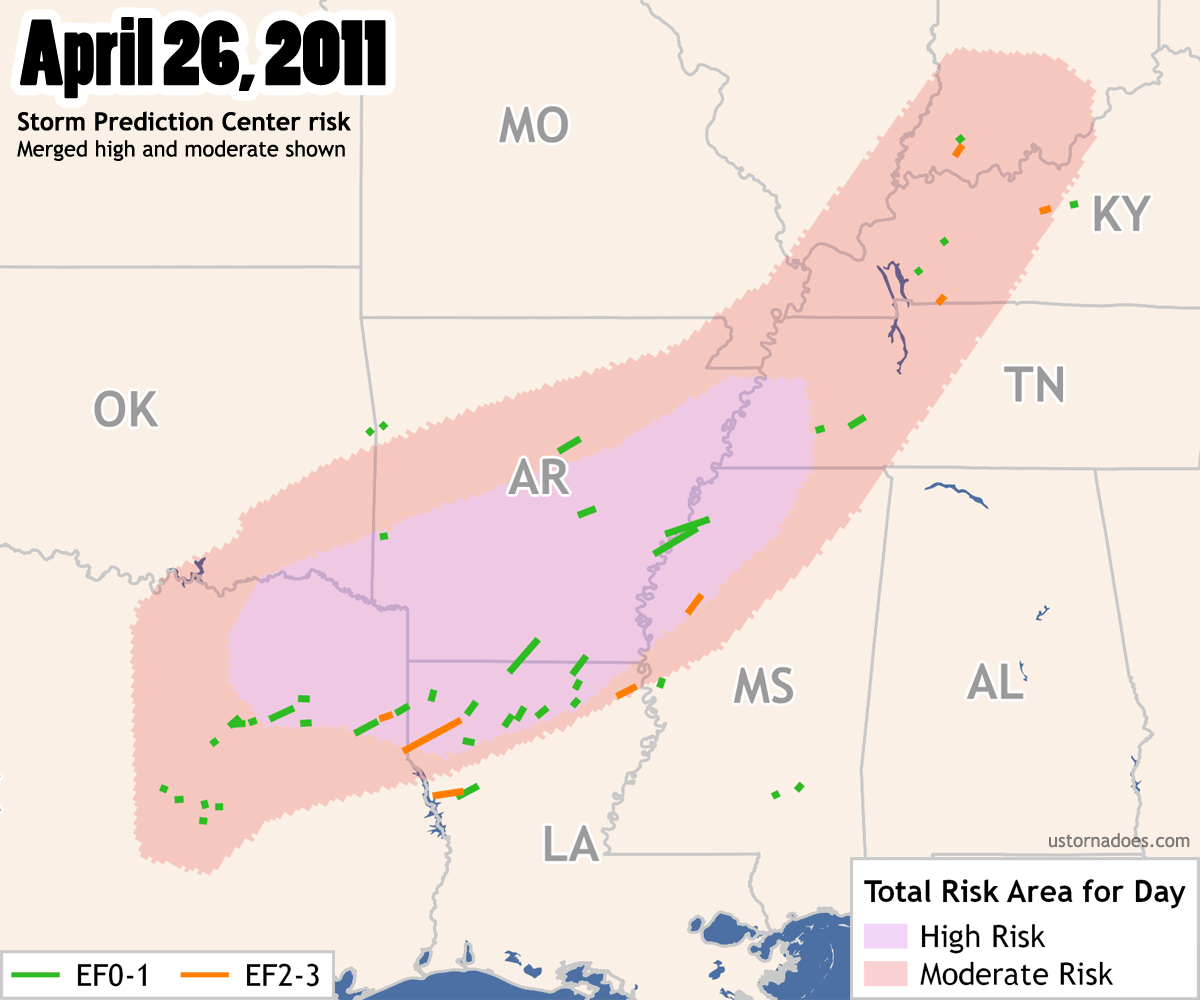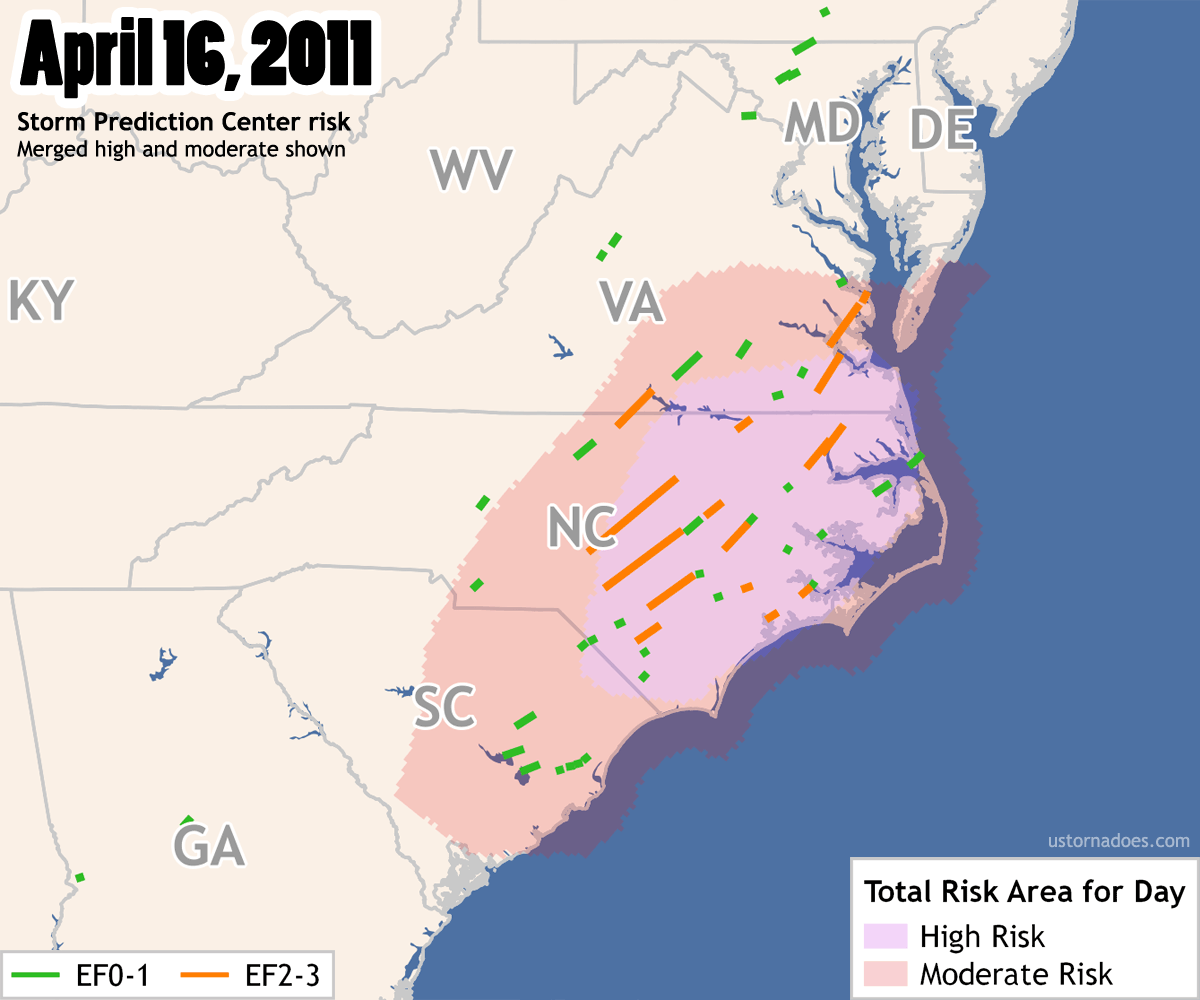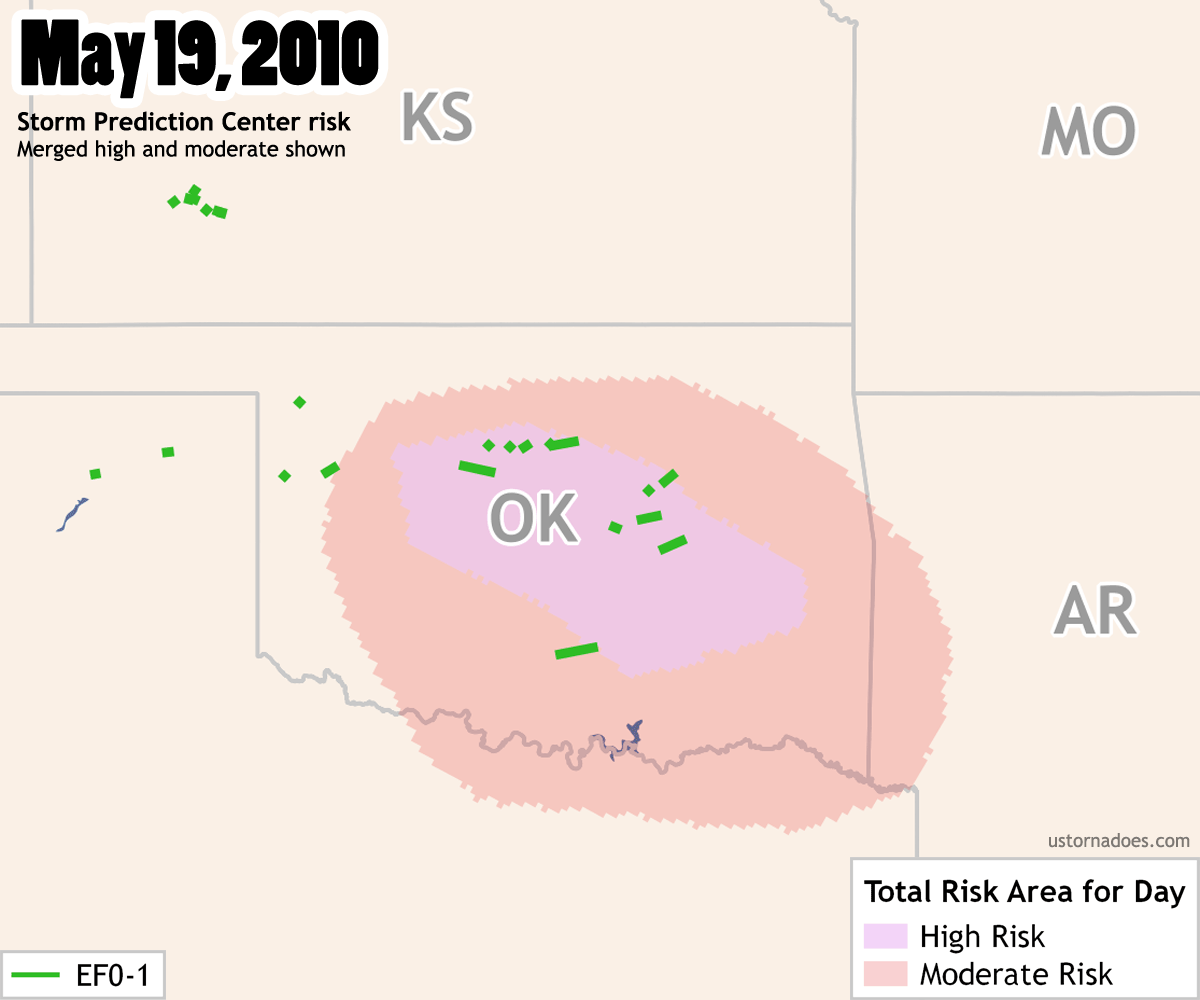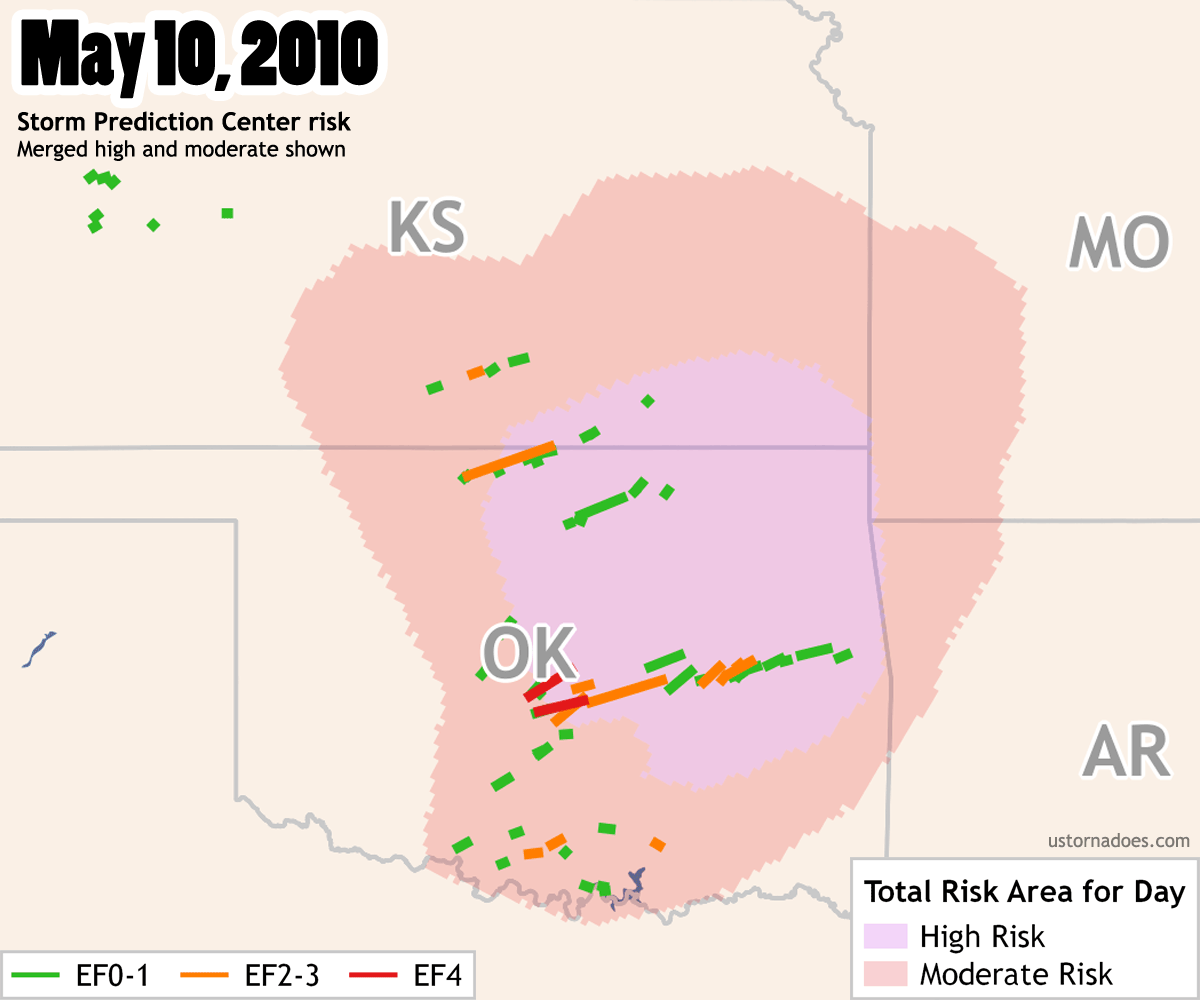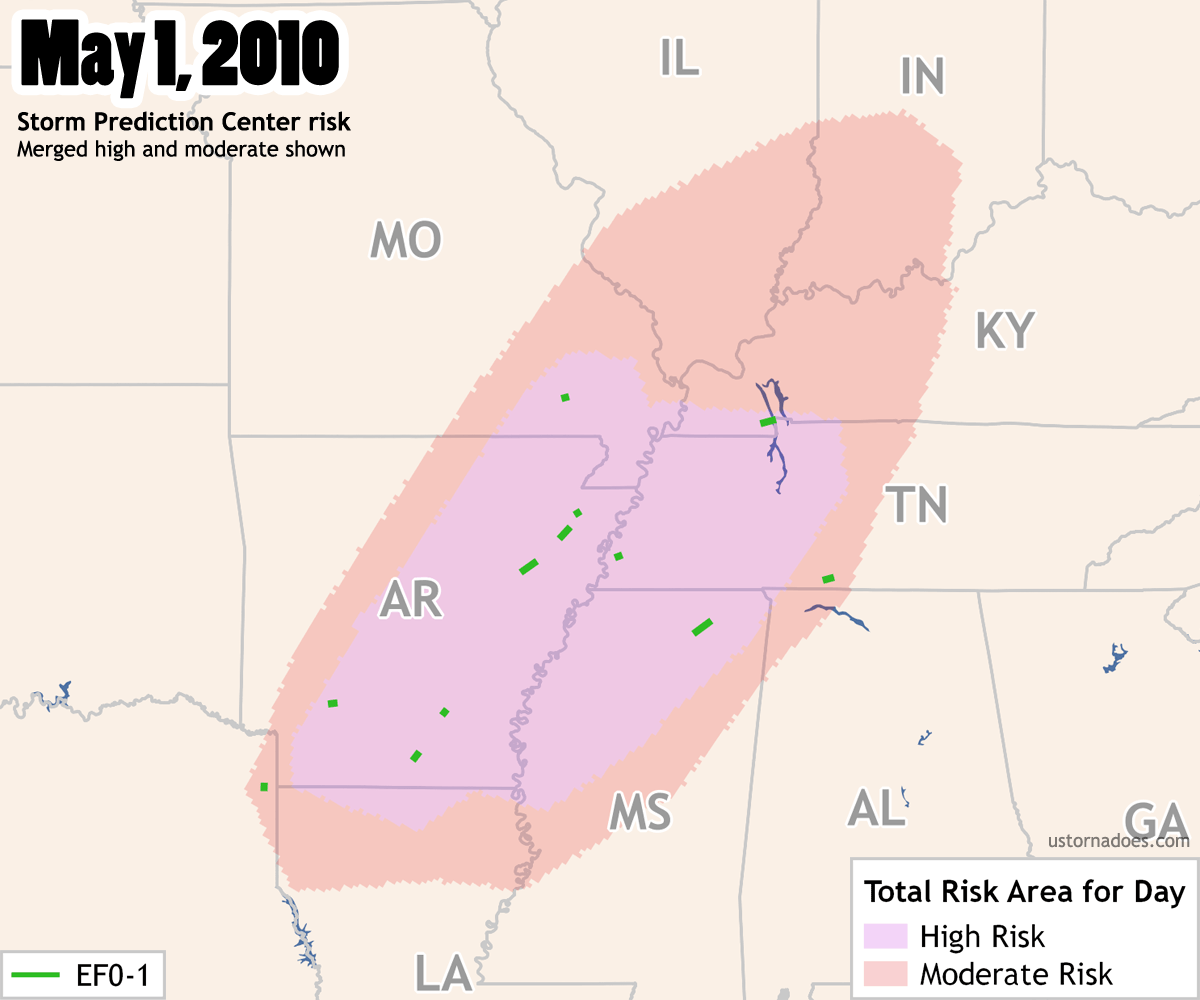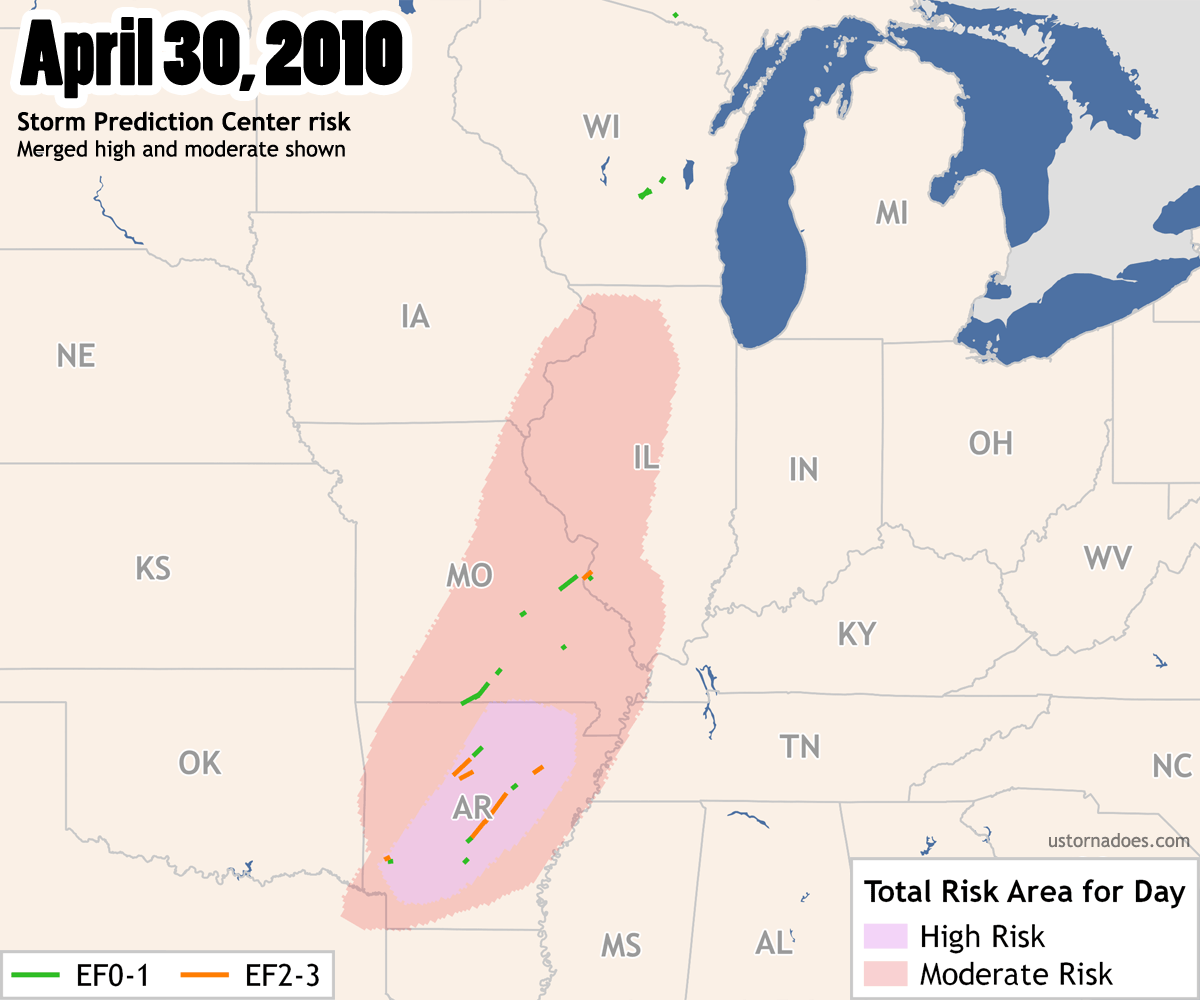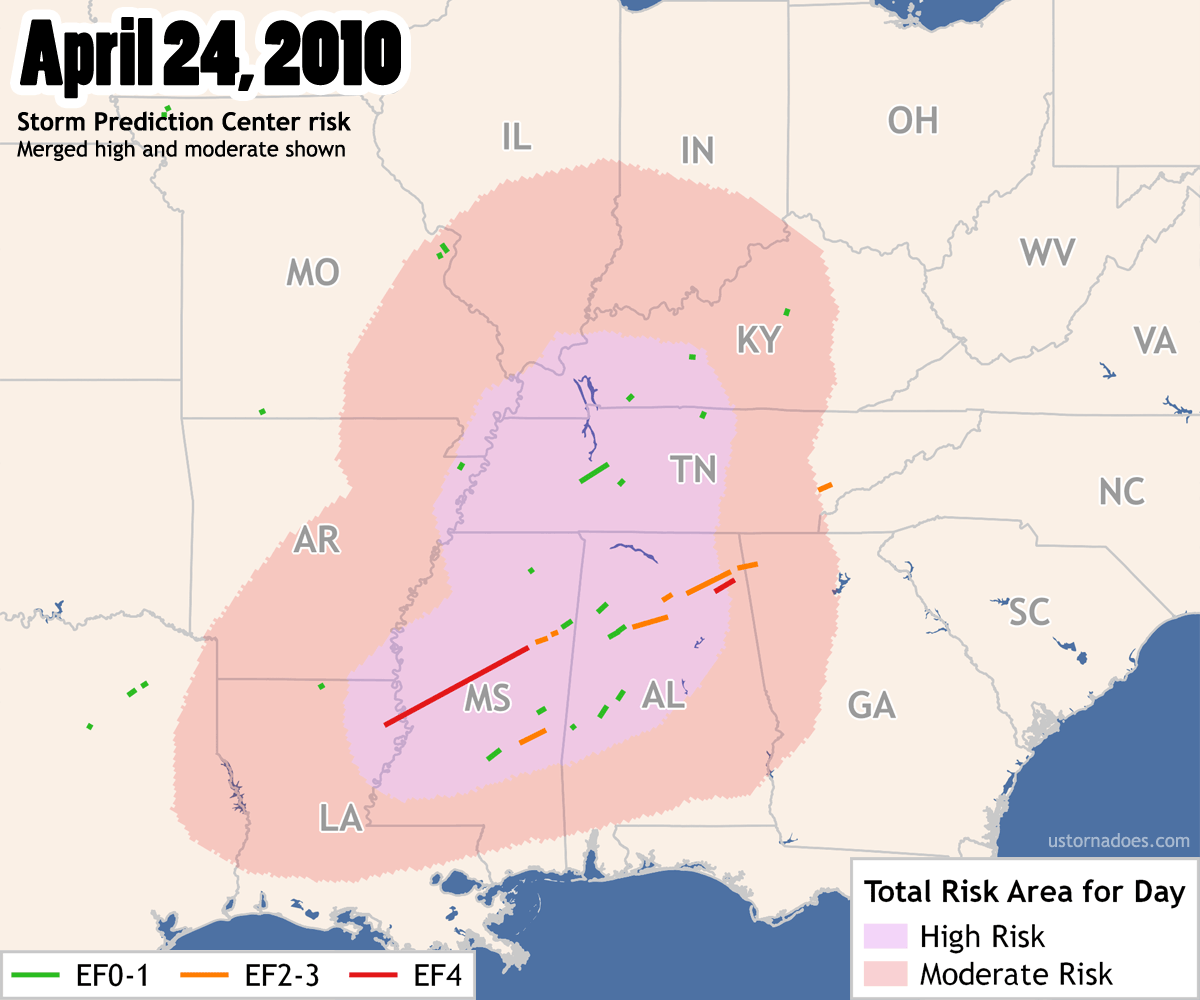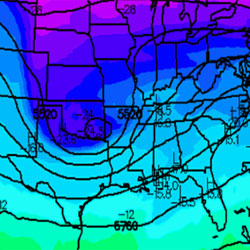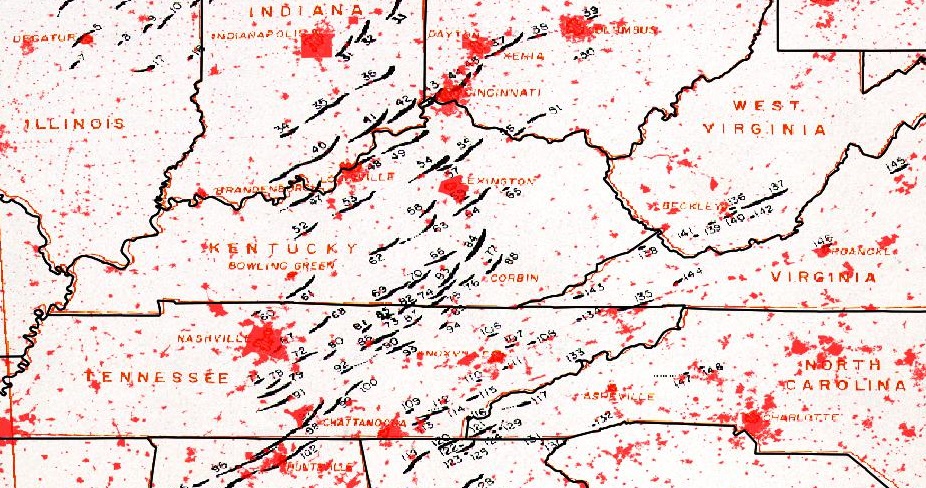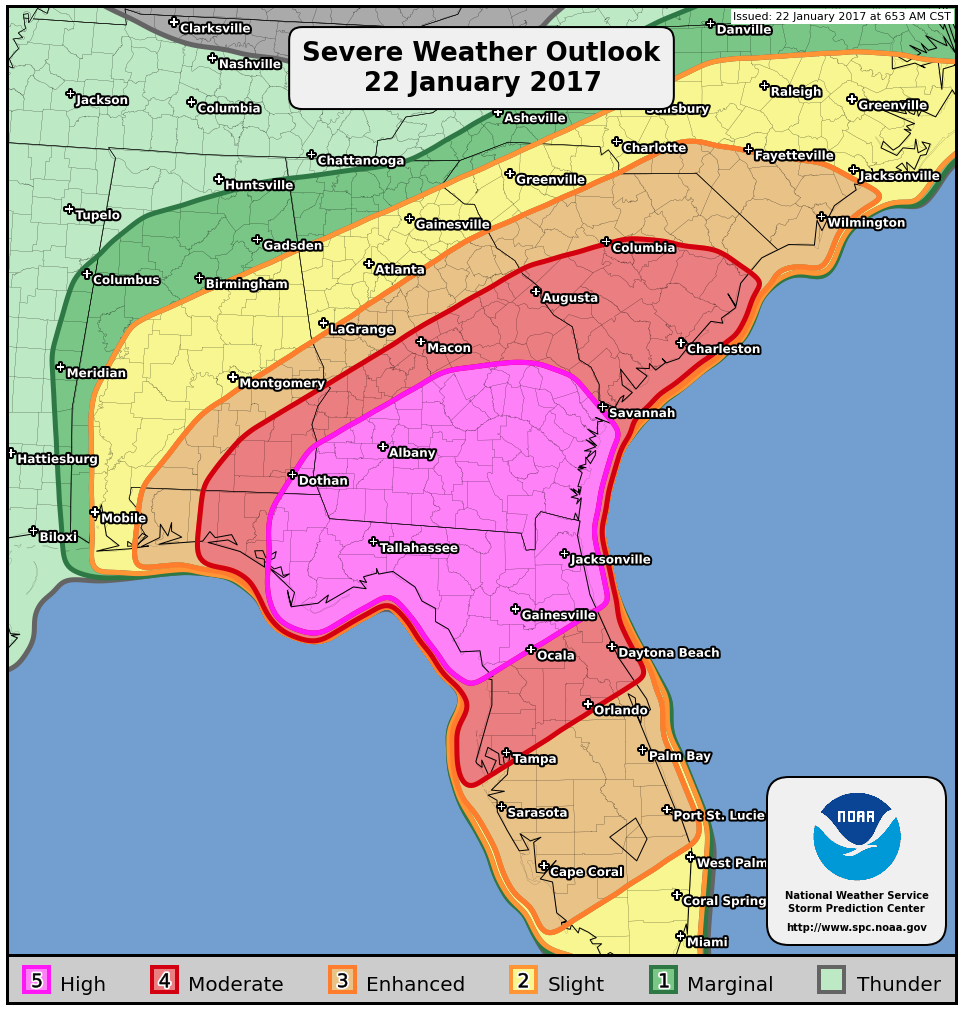
* NOTE: This was posted on JANUARY 22 2017. Information on current events can be found at SPC *
For the first time since June 2014, we have a high risk on our hands. It’s a high risk for tornadoes, given the 30 percent risk for such, which is covered by the pink zone in parts of Florida, Georgia and Alabama. In that region, there has not been a high risk in 10 years.
[What is a high risk? The Storm Prediction Center has answers]
For this post, we’ll look mostly at high risks that reached the 30 percent (odds of one within 25 miles of a point) tornado risk and significant severe weather (higher odds of strong tornadoes) threshold. Those are the tornado high risks. While most high risks are for tornadoes, the Storm Prediction Center does issue them for reasons other than tornado threats. The main alternative is for long-tracked wind storms known as derechos, where the tornado threat is comparatively minimal.
While no two threats are the same, high-end tornado threats share a lot of similarities, which is part of why we can now pick them out from up to a week away. In that sense, it’s certainly worth examining past performance of high risks for tornadoes.
It’s been a while, but high risks happen most years
Since there were no high risks in 2015 and 2016, the past 15 high risks for tornadoes fit nicely in the period from 2010 through now. Given the increase in forecaster ability even over such a short time, it makes sense to focus on relatively recent times rather than going too far back.
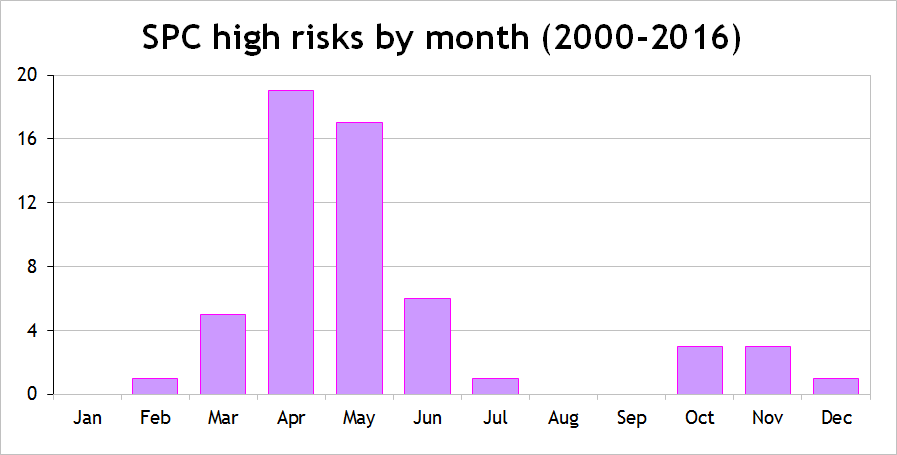
Of all the high risks (including some for derechos in the graphic by month) since the 2000s began, there are typically about 3-4 per year if you don’t factor in the recent high risk drought. They’ll tend to come in pairs as a system crosses the United States, or groups over a few to several weeks. The fewest in any year since 2000 is zero and the most is five.
[Annual and monthly tornado averages for each state (maps)]
The most common month for high risk issuance is April, with 19 during the period. May comes in a close second and June a distant third, not too far above March. Despite tornado numbers reaching their peak in May and June having more on average than April, the most volatile setups tend to favor the first half of the peak season.
High risks are usually bad news
None of the high risks since 2010 produced fewer than a dozen tornadoes. In prior years, it is certainly arguable that some high risks may be considered “busts” on the low side, but even in bust mode they still often produced at least a small tornado event.
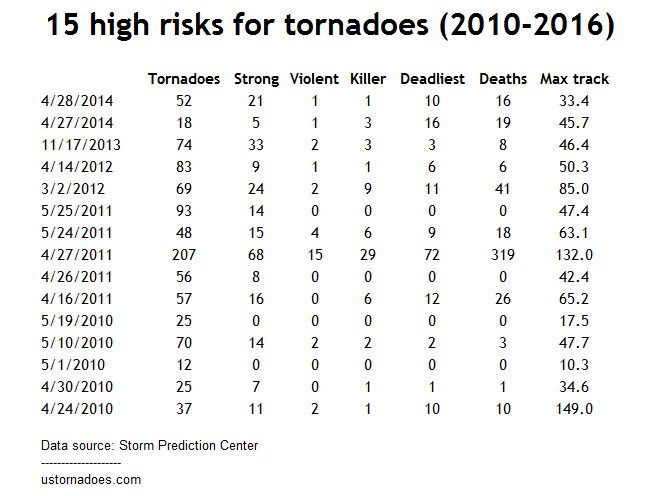
Looking at the averages from these events, the numbers are fairly stark. Since any small sample that includes April 27, 2011 is going to be skewed more than normal, I’ll share the figures with and without it included (these are 15 and 14 event averages respectively):
- With 4/27/2011: Average high risk has 62 tornadoes, 16 of which are strong (EF2+), and two are violent (EF4-5). Four killer tornadoes occur on average, causing 31 deaths. The deadliest averages 10 killed. The longest track tornado averages 58.0 miles.
- Without 4/27/2011: Average high risk has 51 tornadoes, 13 of which are strong, and one is violent. Two killer tornadoes occur on average, causing 11 deaths. The deadliest averages six killed. The longest track tornado averages 52.7 miles.
Among all 15 events, total tornadoes on high risk days ranged from 12 on the low end to 207 on the high. Six of the high risk days did not include violent tornadoes, and two did not even have any strong tornadoes recorded. Those were the outliers, and all the oldest high risks of this sample. (remember, forecasting has been improving rapidly in recent times)
[Tracking ongoing tornado threats]
Every high risk for tornadoes since 2012 has had violent tornadoes and fatalities. Plains events tend to have the lowest fatalities overall, which is largely due to lower population density there compared to the other violent outbreak zones of the South and Southeast or the Midwest.
Maps of the sample recent tornado high risks
The maps below focus on the combined risk zones of the day shown. “Combined” means I merged all the various outlooks for the day to capture the entire area ever placed under high risk and moderate risk. For simplicity, I only grabbed tornadoes from the same calendar day. In general, the high risk areas are well captured by a calendar day. Risk categories below moderate have been left out.
In the list below, June 3, 2014 as well as June 12, 2013 and October 26, 2010 have been excluded because they were not high risks for tornadoes. The latter two reached moderate risk for tornadoes while the most recent one was an enhanced risk for tornadoes.
Apr 28, 2014 | Apr 27, 2014 | Nov 17, 2013 | Apr 14, 2012 | Mar 2, 2012 | May 25, 2011 | May 24, 2011 | Apr 27, 2011 | Apr 26, 2011 | Apr 16, 2011 | May 19, 2010 | May 10, 2010 | May 1, 2010 | Apr 30, 2010 | Apr 24, 2010
April 28, 2014
Tornadoes: 52 — Strong Tornadoes: 21 — Violent tornadoes: 1 — Longest track: 33.39 miles — Killer tornadoes: 1 — Total killed: 16 — Deadliest tornado: 10 killed
April 27, 2014
Tornadoes: 18 — Strong Tornadoes: 5 — Violent tornadoes: 1 — Longest track: 45.68 miles — Killer tornadoes: 3 — Total killed: 19 — Deadliest tornado: 16 killed
November 17, 2013
Tornadoes: 74 — Strong Tornadoes: 33 — Violent tornadoes: 2 — Longest track: 46.36 miles — Killer tornadoes: 3 — Total killed: 8 — Deadliest tornado: 3 killed
April 14, 2012
Tornadoes: 89 — Strong Tornadoes: 9 — Violent tornadoes: 1 — Longest track: 50.28 miles — Killer tornadoes: 1 — Total killed: 6 — Deadliest tornado: 6 killed
March 2, 2012
Tornadoes: 69 — Strong Tornadoes: 24 — Violent tornadoes: 2 — Longest track: 84.99 miles — Killer tornadoes: 9 — Total killed: 41 — Deadliest tornado: 11 killed
May 25, 2011
Tornadoes: 93 — Strong Tornadoes: 14 — Violent tornadoes: 0 — Longest track: 47.41 miles — Killer tornadoes: 0 — Total killed: 0 — Deadliest tornado: 0 killed
May 24, 2011
Tornadoes: 48 — Strong Tornadoes: 15 — Violent tornadoes: 4 — Longest track: 63.1 miles — Killer tornadoes: 6 — Total killed: 18 — Deadliest tornado: 9 killed
April 27, 2011
Tornadoes: 207 — Strong Tornadoes: 68 — Violent tornadoes: 15 — Longest track: 132 miles — Killer tornadoes: 29 — Total killed: 319 — Deadliest tornado: 72 killed
April 26, 2011
Tornadoes: 56 — Strong Tornadoes: 8 — Violent tornadoes: 0 — Longest track: 42.37 miles — Killer tornadoes: 0 — Total killed: 0 — Deadliest tornado: 0 killed
April 16, 2011
Tornadoes: 57 — Strong Tornadoes: 16 — Violent tornadoes: 0 — Longest track: 65.23 miles — Killer tornadoes: 6 — Total killed: 26 — Deadliest tornado: 12 killed
April 28, 2014
Tornadoes: 25 — Strong Tornadoes: 0 — Violent tornadoes: 0 — Longest track: 17.5 miles — Killer tornadoes: 0 — Total killed: 0 — Deadliest tornado: 0 killed
May 10, 2010
Tornadoes: 70 — Strong Tornadoes: 14 — Violent tornadoes: 2 — Longest track: 47.66 miles — Killer tornadoes: 2 — Total killed: 3 — Deadliest tornado: 2 killed
May 1, 2010
Tornadoes: 12 — Strong Tornadoes: 0 — Violent tornadoes: 0 — Longest track: 10.34 miles — Killer tornadoes: 0 — Total killed: 0 — Deadliest tornado: 0 killed
April 30, 2010
Tornadoes: 25 — Strong tornadoes: 7 — Violent tornadoes: 0 — Longest track: 34.6 miles — Killer tornadoes: 1 — Total killed: 1 — Deadliest tornado: 1 killed
April 24, 2010
Tornadoes: 37 — Strong tornadoes: 11 — Violent tornadoes: 2 — Longest track: 148.97 miles — Killer tornadoes: 1 — Total killed: 10 — Deadliest tornado: 10 killed
Latest posts by Ian Livingston (see all)
- Busy March for twisters to end with another multi-day event - March 28, 2025
- Everything but locusts: NWS shines in apocalyptic weather - March 17, 2025
- Top tornado videos of 2023 - January 1, 2024
